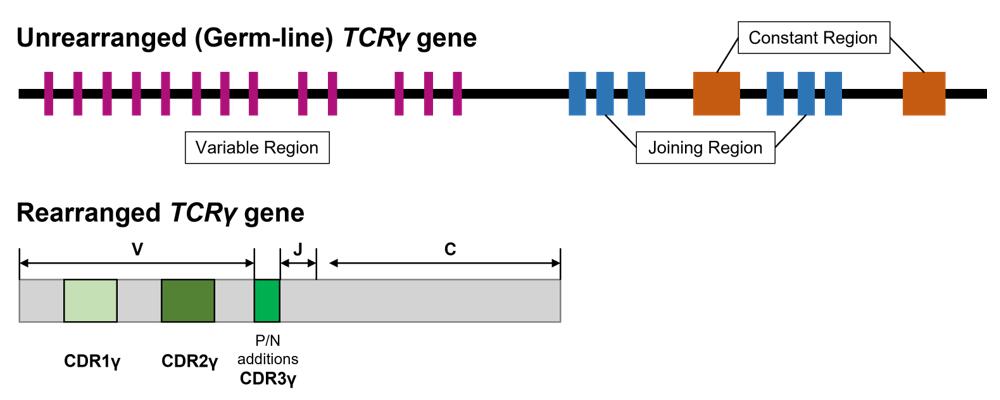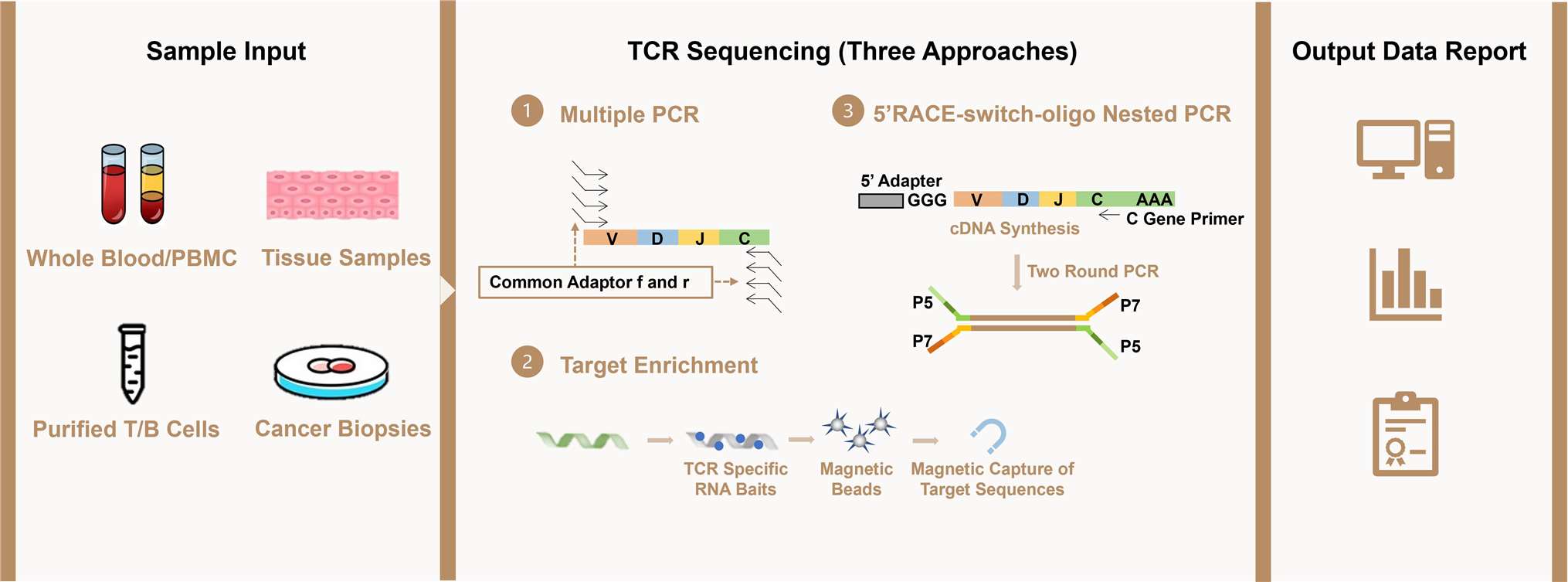Immunomics Services
γ Chain of TCR Sequencing Service
The γ chain of γδ T cells is composed of V and J genes. The study of γδ T cells facilitates the understanding of molecular processes and mechanisms of pathogen clearance, tissue repair, tumor surveillance and immune regulation, as well as autoimmune, allergic, and oncogenic effects. As a professional immunomics research company, CD Genomics provides professional γ chain sequencing services to our clients and help to analyze the changes in T cell receptor (TCR) repertoire.
Introduction to γδ T Cells
Although less is known about γδ T cells because only 1-10% of human T cells express γδ TCR, γδ T cells may represent half of the T cell population in various human tissues, such as intestinal, germinal, and mucosal epithelial cells, and in the peripheral blood of ungulates. Unlike αβ T cells, the selection of Vγ and Vδ segments appears to predict tissue homing and effector functions. Thus, γδ T cells are expected to have a fundamentally different role and function from αβ T cells, as they do not recognize the MHC-associated peptide Ags and are therefore not restricted by MHC.
Gene Structure of TCRγ Gene
Seven functional Vγ gene fragments, Vγ2, Vγ3, Vγ4, Vγ5, Vγ8, Vγ9, and Vγ11, located within the γ locus on human chromosome 7, are used for γ chain rearrangements. Several Vγ pseudogenes are also found within the human γ locus and are not used in productive alignments of the γδ TCR, such as Vγ1, Vγ5P, Vγ6, Vγ7, and Vγ10. However, in other higher primates, these do not all appear to be pseudogenes, and at least Vγ10 is found in chimpanzees with productively rearranged γ-chain transcripts. The limited range of Vδ and Vγ gene fragments available for rearrangement has led to speculation that these TCRs recognize conserved self-proteins with low variability.
 Fig.1 Structure of TCRγ gene.
Fig.1 Structure of TCRγ gene.
Rationale of the γ Chain Sequencing and Analysis
Surprisingly, little is known about human γδ T cells or the ligands they recognize. Unlike αβ T cells, γδ T cells exhibit a strict tissue-specific localization, determined by the properties of the rearranged TCR. Most advances in γδ TCRs have been made on major subpopulations of γδ T cells found in human peripheral blood expressing TCRs made from the Vγ9 and Vδ2 genes. Most of the known γδ TCR ligands are essentially autologous. Based on this fact, γδ T cells have been shown to contribute to autoimmune diseases such as myositis and type I diabetes because they recognize aminoacyl-tRNA synthetase and insulin-derived peptides, respectively. Therefore, the study of γ chains is beneficial to understand the role of γδ T cells in the pathogenesis of autoimmune diseases.
Our Services
The specificity of T cells for viral antigens presented by all nucleated cells on the MHC is determined by their TCR. The antigenic specificity of each TCR lies in its complementary decision region 3 (CDR3) located at the V(D)J junction. Thus, each unique T cell clone is recognized by its unique CDR3 region and therefore has a unique antigenic specificity. The TCR recombination process generates a diverse TCR library capable of recognizing a broad range of antigens and providing an effective immune response.
CD Genomics has focused on immunomics research for many years, providing professional γ chain of TCR sequencing services to our clients. Furthermore, a professional bioinformatics team is available to provide data processing and analysis services to our clients.
Workflow of γ Chain of TCR Sequencing

Why Choose Us
| Multiple Library Construction Methods. | |
| Advanced High-throughput Sequencing Platform. | |
| Professional Data Analysis Team. |
Through the integration of omics and immunological research, CD Genomics has accumulated extensive experience with advanced research instruments and professional researchers. Our company is committed to providing trusted services to researchers and institutions worldwide to facilitate research and development efforts in areas such as disease mechanisms and new therapies. Please contact us for more information.
